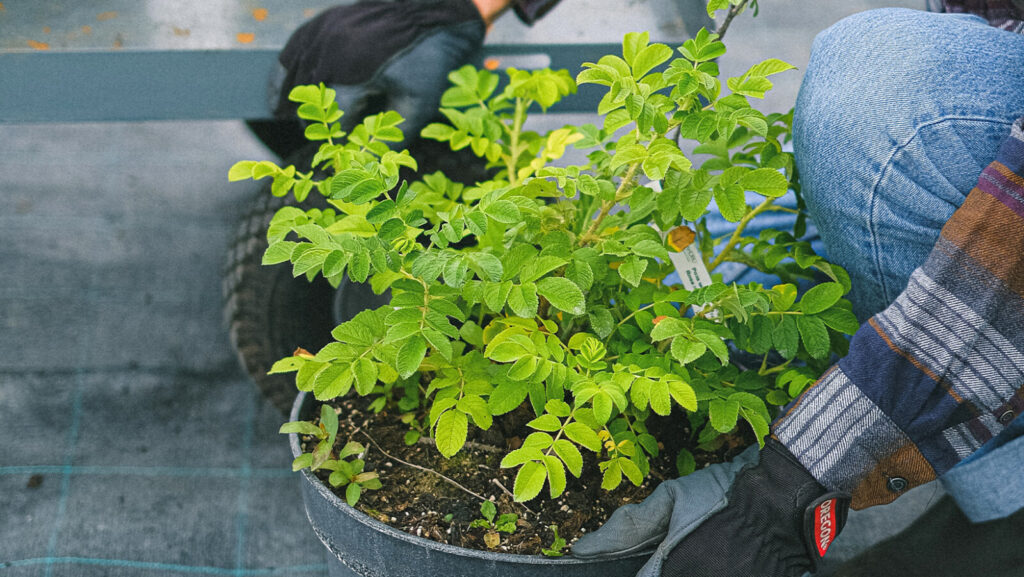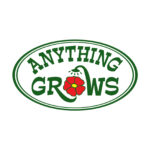

Improper planting is the number one cause of plant death besides lack of water.
(Don’t) Dig a hole twice the size…. is what most tags and planting instructions say. They don’t mention specifically how they mean though.
(Do) You want to dig a hole twice as wide, but not twice as deep.
Digging the hole too deep is the biggest issue we see when people are planting anything. Don’t dig the hole too deep! When you are looking at the root mass of the plant being planted, the surface of the root mass should be level with the original ground level, or slightly above. Dig the hole wider, the plant will like this.
Practical Application – place the plant on the ground where you would like to plant it. Using a shovel, cut into the ground all the way around the pot in a circle, so it’s about twice as wide as the original plant pot. Now you have an area in the ground twice as wide as your plants root mass. Dig out the soil no deeper than the root mass and then you can proceed with planting.
Some of this may seem obvious but take the following into consideration:
Good soil should be used to back-fill the hole. Something with some organic matter will aid in the growth of the plant. We recommend a 3-in-1 soil sometimes called ‘Garden Mix’, it has loam, peat and compost pre-mixed, ready to use.
NOTE: Don’t add too much organic matter or the roots may be reluctant to move beyond the rich soil you have provided leading to a weaker, less established plant in the future.
If planting in a heavy soil (clay), the plants will benefit from being raised about 1″ (2.5cm) above the original ground level. This improves drainage away from the crown and roots. This means you don’t have to dig the hole as deep!
When back-filling it is important to have good root-to-soil contact. You want to pack the soil in tightly to avoid air pockets. Air pockets, lead to excessive settling and roots drying out. You can use water during planting to help settle the soil. NOTE: Adding the soil in small amounts to the hole as opposed to all at once will help prevent air pockets from forming.
Adding 2″-3″ of mulch will help the soil retain the moisture better, even during dry spells. It keeps the sun off the soil and helps keep the roots cool and at a more consistent temperature. Avoid pushing the mulch right up to the trunk or bark of the plants to prevent problems.
You should add some form of nutrients for your plants. There are several different options. Any one is sufficient. For fertilizing your new plants do one of the following:
MYKE Growth Supplement
You can use MYKE Growth Supplement in addition to any of the fertilizing methods above. MYKE is a naturally occurring fungus that forms a bond with the root mass, effectively increasing the roots surface area allowing it to absorb more water and nutrients from the soil. MYKE is best used with Organic fertilizers.
NOTE: When you purchase MYKE with any of our trees & shrubs you get a 5 year warranty on your plants. Learn more here.
General rule of thumb: Newly planted trees, shrubs, perennials and annuals need water every day. Sometimes twice a day if its very hot and we haven’t had any rain.
Rain / Irrigation – Is not enough for newly planted trees and shrubs! They should be watered thoroughly by hand at a low pressure so the water soaks in and absorbs into the soil.
Best Method of watering – Use a low pressure and allow the tree well to fill up with water until it starts to pool. Observe how long it takes to soak in. If it is quick, repeat this process until it takes several minutes for the water to soak down into the soil. This is how you will build up the water level around the root. You want to provide a deep root watering, not surface level.
Factors affecting water requirements:
These are all things that influence how much water your plants will need when they are newly planted. It is hard to say exactly how much a plant will need until it has been planted.
Plants will generally show us they are thirsty. You will see wilted or ‘flagging’ leaves. Disclaimer: We have to be paying attention to our newly planted plants so that we notice when they are thirsty. If you notice a week later, it’s already too late. No amount of water at this point is going to bring back the vitality the way it was when you got it.
Some larger trees may need staking to provide support while the root is getting established. You can leave a newly planted tree for a few days to a week to see how it fares in the location it was planted. If it is leaning then it may require staking. Growing trees and shrubs without staking is preferable because they will develop more roots and stronger root systems.
If you do have to stake your trees, the stakes should be on for one growing season and then removed. Repeat the process watching how it fares in the conditions and if needed re-stake for another season.
NOTE: Stakes should not be left on trees indefinitely! The bark will grow around the rope or twine and cause major issues as the tree grows potentially blocking the nutrient flow up the tree.

We are Cochrane & West Calgary’s largest Garden Center, owned-and-operated by plant-loving locals. We’re glad you’re here. You can visit us 7 days a week in store, or online. Get Directions
Get free gardening resources, monthly coupons, and new arrival alerts, straight to your inbox.
Join Now